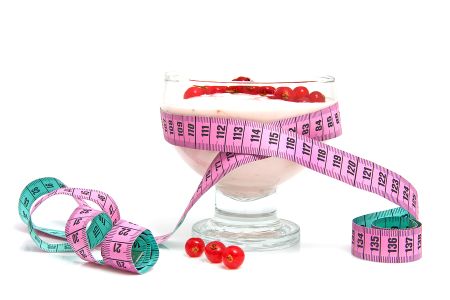Bacteria are usually seen as dangerous, unpleasant and unwanted invaders.
They lurk on the surface, spread through droplets emitted into the air during a sneeze or a cough, or hide in spoiled or insufficiently cooked food.
When they penetrate the body through a swallow, breath, or other contact, the bacteria can multiply and often cause disease if the immune system does not fight back.
We think that by avoiding bacteria we can prevent the diseases they cause. When doctors suspect a bacterial infection, they immediately subscribe antibiotics, to get rid of them. Pills, syrups, drops, anti-bacterial lotions, and disinfectants all come to our rescue when we wish to weed the bacteria out of our houses and bodies.

But some bacteria can be our best friends in preventing and even fighting disease.
Contrary to popular belief, not all bacteria are bad. In fact, over 400 species of bacteria are actually good for your health. These bacteria assist the body in fighting multiplication and activity of pathogenic (“bad”) bacteria. These beneficial bacteria are commonly known as probiotic bacteria. We supply them with food and shelter – but they don’t get it all for free. Our bodies need their services as much as they need ours.
Probiotic bacteria are part of the intestinal bacterial population, also known as the “flora” or “microflora” of the colon, have been added for centuries to milk, soy, and cabbage to produce such products as yogurt, cheese, miso, sauerkraut, and more. The fermentation these foods undergo with the help of probiotic bacteria improves both their shelf-life and their digestion by the body.
Research increasingly suggests that intestinal microflora may play an important role in how we store overconsumed energy as body fat. A study published in Science Express presented findings in mice that may provide an explanation.
Researchers from Emory, Cornell University and the University of Colorado at Boulder observed that mice that were predisposed to an increased number of pathogenic intestinal bacteria – due to lack of a specific cellular protein that prevented pathogenic intestinal bacteria from flourishing relatively uncontrolled – had a higher level of systemic inflammation and were about 15% heavier than their unpredisposed counterparts. Results from the University of Arizona Scottsdale found a link between microflora imbalance and inflammation-inducing lipopolysaccharides in the presence of a high-fat diet.
When that happens, an inflammatory state is triggered in response to the increasing population of pathogens. This state makes cells less sensitive to insulin – likely due to competition with inflammatory factors, as preventing systemic infection takes top priority. Such inflammation and desensitization to insulin is known to lead to high blood pressure and high cholesterol levels, as well as higher risk for diabetes, heart disease, and the metabolic syndrome (a combination of all of the above) — observed in experimental models.
When the genetically-sensitive mice were given unrestricted diets, they ate 10% more than normal mice. Additionally, even when their food was limited, these mice were still less sensitive to insulin than their normal counterparts. It was concluded that the low-grade inflammation and therefore the insulin resistance caused by the pathogenic bacteria likely made the mice eat more, which led to weight gain.
While these findings were limited to mice, experts believe they may be just as applicable to humans. Previous microflora research in obese people noted that they tended to have a makeup of intestinal pathogens different from that of people who are of normal weight – and notably different than what was the norm several decades ago.
Storage and use of probiotic products
Probiotic organisms are sensitive to temperature, a critical factor influencing their survival during storage: the lower the temperature, the more stable the probiotic viability will be. Temperatures over 45-50°C (113-131°F) will cause a reduction in the population over a relatively short period of time, and the higher the temperature, the more severe the reduction. Therefore, probiotics and products rich in probiotics should refrigerated, and then cooked for as little time as possible (if needed).
These products are also sensitive to moisture: the higher the moisture, the lower the stability and viability over time. If the product is dried, as in supplemental powder or capsules, the bacteria will be in a quiescent state, and so can be stored at ambient temperatures for 12 months or more. Producing and maintaining low water activities in the foods is the key to maintaining probiotic viability during nonrefrigerated storage because there is a remarkable interaction between temperature and water activity.
Where to find probiotics
The most important and widely available species of probiotic bacteria are among the Lactobacillus species (i.e. acidophilus, bulgaricus, casei or paracasei, plantarus, and rhamnosus) and Bifidobacterium species (animalis, bifidus, infantis, and longum). They are available in capsules, powders, and most importantly, fermented products, such as the following:
- Dairy and vegan substitutes, especially yogurt and raw cheeses
- Special soy products such as tempeh, miso, fuyu, natto, and yogurt
- Some vegan raw cheeses
- Specially prepared cured vegetable products such as kimchi
- Many organic fruits and vegetables
Other than providing a comfortable home for probiotic bacteria, how can we be the most hospitable host?
Probiotic bacteria feed on digested materials from what we eat – another reason why a sound diet is so important. And like any other organism, they like treats. For them, the special foods they like best are known as “prebiotics”. Products that provide prebiotics and probiotics in combination are known as “symbiotics” (from “symbiosis”) or “synbiotics” (from “synergy”).
All of these products have been associated with a broad spectrum of beneficial effects when administered to animals and humans in scientific studies. These effects include easing of chronic inflammatory conditions, including obesity.
Prebiotics are compounds generally thought of as types of fibers, though slightly different from the fibers we know in our foods. Examples include inulin, fructooligosaccharide (FOS), mannan oligosaccharides (MOS), xylooligosaccharides (XOS), polydextrose, galactooligosaccharide, trans-galactooligosaccharide, oligofructose, and oligofructose-enriched Inulin (OEI).
Some of these are found naturally in foods in significant amounts, and others are extracted, concentrated and added to foods.
It should be noted that no plant or food is a prebiotic – rather, certain foods contain prebiotics in varying amounts.
Top 10 Foods Containing Prebiotics
- Raw Chicory Root 64.6%
- Raw Jerusalem Artichoke 31.5%
- Raw Dandelion Greens 24.3%
- Raw Garlic 17.5%
- Raw Leek 11.7%
- Raw Onion 8.6%
- Cooked Onion 5%
- Raw Asparagus 5%
- Raw Wheat bran 5%
- Whole Wheat flour, Cooked 4.8%
- Raw Banana 1%
___________________________________________
Whether the interest is weight loss alone or health overall – intestinal, circulatory, cardiac, immunological – probiotics are key.


What is the best probiotic for an 77 year old woman? I have tried one but not sure if it is the right one and can not remember which one it was. There are many to choose from in the stores.
Hi, bbzzmm3. Agreed! For that reason, we checked around, and we were the most impressed with BioTrust Pro-x10 http://b2cms.biotrust.com/shop.asp?p=prox10&sid=forumpx10.
Hi, Gerda. Good bacteria are not destroyed by freezing, but rather by exposure to heat.
Sauerkraut is suppose to have good Bacteria’s. Do the live bacteria’s get destroyed by freezing it?
Hi, Diddy. Good probiotics have been encouraged to be part of the intervention in dealing with Candida albicans infections.
Are any of these helpful to cure candida infection?
Helen Clarke want to loss wight thank you
Hi, sharon. Organic, fermented soy is excellent for health. Overly processed soy is considered unhealthy, and there is some concern about genetically modified soy as well.
I thought soy is bad for us…
Hi, Sue. Yes you can.
Very interesting especially the pre biotics
Can you get raw chicory root powdered in a capsule at a health food store?